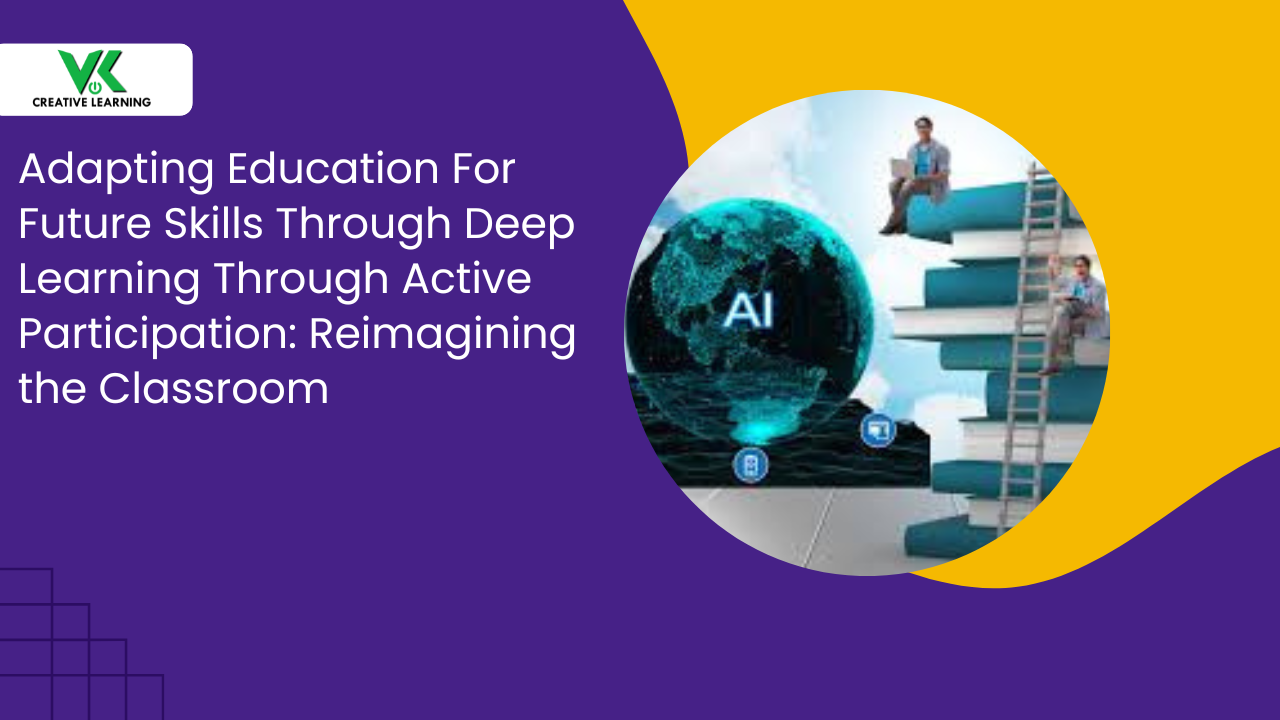Top Emerging Elearning Trends Taking the World by Storm
June 17, 2023
The growth of eLearning solutions has been on an upward curve as corporate firms industries, educational institutes, and other entities are utilizing it for upskilling purposes. Per Forbes, the worldwide business e-learning sphere is predicted to witness a whopping 15% yearly surge by 2026, ultimately reaching an impressive sum of $50 billion.
Pretty impressive growth pattern, isn’t it? This is because, in light of swift technological advancements, eLearning has transcended mere content dissemination. Importantly, modern eLearning platforms prioritize the personal and human aspects of knowledge acquisition and exploration. Simply put, eLearning solutions are the future training models, tailored to the learners’ learning needs and companies’ objectives.
With these in perspective, we will explore different aspects (top eLearning trends) that make eLearning the best choice for training purposes in the current times. Those top eLearning trends that make the headlines are:
- Artificial Intelligence For Delivering Personalized Content
- Predictive Data Analytics
- Virtual And Augmented Reality (or called VR/AR technologies)
- Mobile Learning
- Highly Detailed Animations
- Smart Interactive Simulations
Top Emerging Elearning Trends Making eLearning Solutions Stand Out
Top emerging eLearning trends are revolutionizing the way e-learning solutions are rendered unique features so that knowledge acquisition and retention are quick. These top eLearning trends are explained below so that a company can create its courseware referring to them.
- Artificial Intelligence For Delivering Personalized Content: One trend that is making a buzz is the incorporation of Artificial Intelligence for delivering personalized content to learners. Elaborately put, AI analyzes individual learning habits and preferences, tailoring the educational experience accordingly.
This tailoring is achieved through AI's ability to gather and interpret data on each learner's unique style of understanding, interactions with learning materials, and performance track record. Consequently, it helps customize training materials to fit each person's requirements, leading to a fast uptake of knowledge.
For example, AI algorithms can adeptly modulate the tempo of a lesson, catering to each student's individual comfortable learning level. Importantly, distinguishing if a learner faces hurdles or sails smoothly through the subject matter, artificial intelligence has the ability to adjust the pace of presenting new concepts. This helps students get extra time for tough ideas and lets advanced learners move ahead without a one-size-fits-all approach.
- Predictive Data Analytics: Predictive analytics in eLearning primarily involves aggregating and examining large volumes of data collected from varied educational platforms and resources.
Through analyzing this data, such systems can produce valuable guidance and suggestions for educators, empowering them to effectively grasp their learners' strong suits and areas needing improvement.
Importantly, harnessing the power of predictive analytics can potentially elevate tailor-made learning journeys and significantly boost academic triumph for each learner taking part.
Thus, predictive analytics in eLearning keeps an eye on students' achievements and highlights aspects where they may face difficulties, allowing fine-tuning proactive solutions to circumvent obstacles.
By spotting patterns in students' learning behaviors or predicting their test performances based on past records, Learning and Development Teams can fine-tune their teaching methods even before any problems arise.
- VR/AR Technologies: Virtual Reality pertains to a digitally fabricated domain that thoroughly immerses the individual's senses, seamlessly trading a tangible world for a simulated one.
Primarily tapped via advanced visors or spectacles, this trailblazing tech grants individuals the opportunity to plunge into 3-dimensional, comprehensive surroundings by mimicking the sensation of physical presence amid the virtual world.
On another note, Augmented Reality enhances digital aspects into the user's perspective of the actual environment using gadgets like smartphones or AR glasses. It boosts one's understanding of the world by incorporating engaging, pertinent details and visuals.
Hence, VR/AR environments create immersive experiences that facilitate interactive learning through simulations and visual demonstrations.
Thus, no doubt, top eLearning trend innovations are leaving a remarkable impression on eLearning solutions spanning across a plethora of sectors, including corporate education, specialized industry utilization, and educational programs.
For instance, a trainee mechanic utilizing AR might overlay instructions onto an engine while performing repairs or an architecture student might build a 3D model of a building using VR software.
- Mobile Learning: mLearning empowers learners to tap into learning resources on their handheld devices. Thus, they acquire the freedom to get instant access to desired courseware or knowledge at their leisure, regardless of location. This prevailing shift is noticeable in the realm of business, where experts are employing mobile eLearning frameworks for self-improvement and expanding their competencies.
Highly Detailed Animations: By incorporating visually rich animated sequences, course providers can convey complex concepts more effectively; thereby increasing student engagement and retention rates.
For instance, a medical school might use lifelike animations to showcase intricate surgical procedures or to simulate the molecular reactions underlying drug metabolism.
Similarly, engineering firms could leverage high-quality animations to demonstrate the principles behind advanced machinery or 3D design software.
- Smart Interactive Simulations: These virtual scenarios enable students to engage with digital realms that accurately replicate real-life circumstances. By interacting with these lifelike simulations, learners acquire valuable domain-specific knowledge and gain experience navigating authentic situations.
Through cultivating hands-on experiences, they give rise to immersive education, which generally carries more weight than dormant teaching approaches.
A prime illustration of this progression is flight simulators employed by aviation academies to coach pilots in diverse weather circumstances and crisis situations without setting foot off the ground.
An additional example includes corporate simulations that mimic market behavior, enabling management students to test their decision-making skills within a secure setting.
Conclusion
The above-explained top emerging trends are making waves and will be incorporated into most digital training programs in the future. If you as a company are looking forward to incorporating them in your eLearning training modules, then VK Creative Learning can assist you.
So, immediately seize the opportunity to join the eLearning revolution by integrating top emerging eLearning trends into your virtual learning solutions! Act now and unlock your company's true potential--reach out to our team of experts at VK Creative Learning and let's build a brighter future together!




